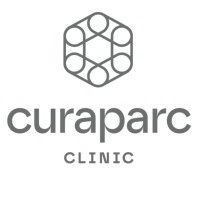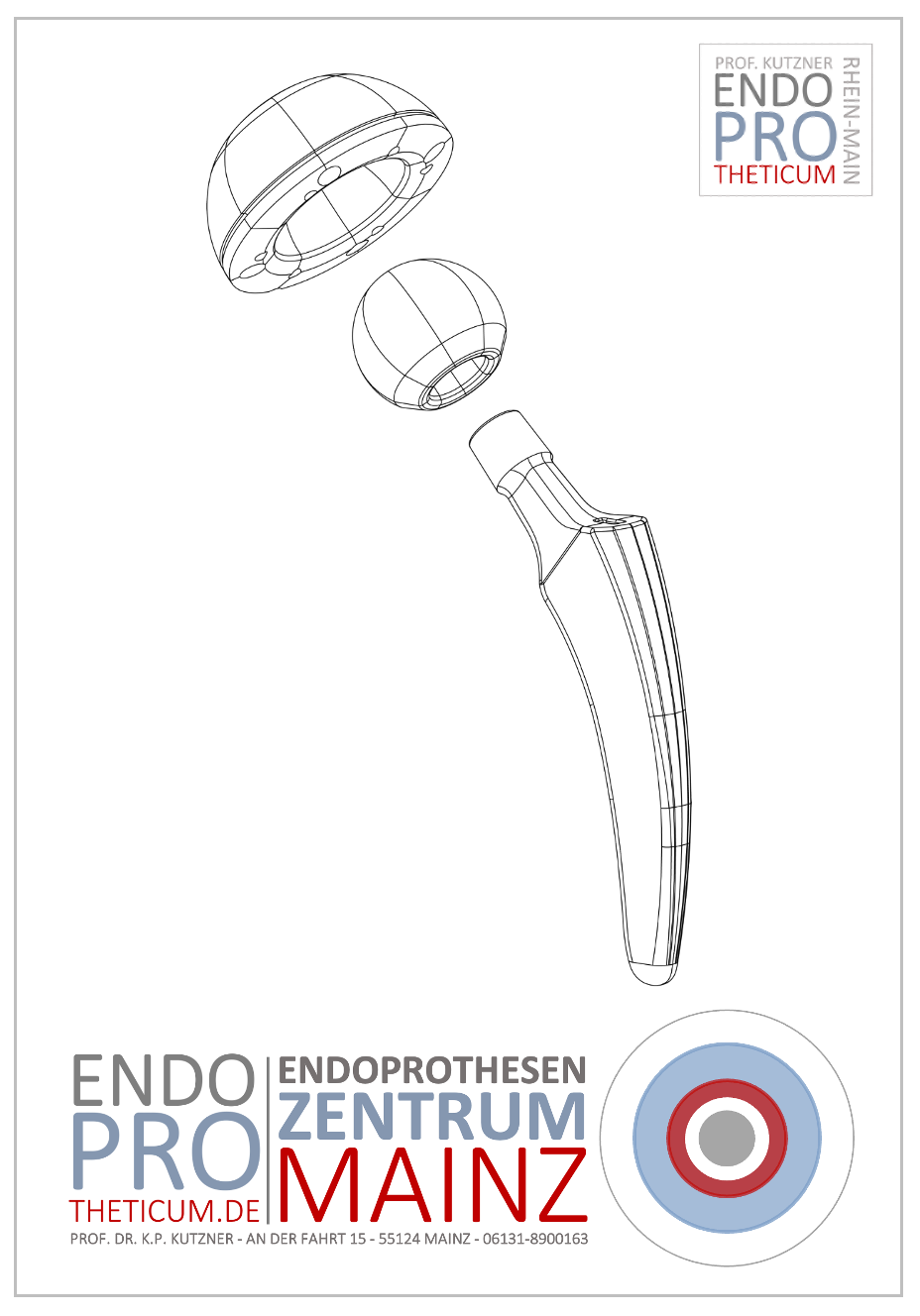Infiltration with cortisone before knee replacement — what should be considered?
The timing of an injection treatment in the knee before a possible endoprosthetic operation is important

Many people with advanced knee osteoarthritis are familiar with the problem: The knee hurts, swells, feels stiff, and makes every movement painful. When conservative measures such as physical therapy, weight loss, or painkillers no longer provide sufficient relief, doctors often resort to so-called infiltrations — injections directly into the joint Cortisone injections are particularly popular because they work quickly and often significantly reduce inflammation in the joint.
But what many patients don't realize is that anyone who is scheduled to receive a knee replacement or endoprosthesis should be cautious with cortisone infiltrations. Timing a crucial role. Surgery performed too soon after an injection can increase the risk of post-joint replacement infections —a complication that should be avoided at all costs.
What is infiltration?
Infiltration performed on an outpatient basis and can be helpful for osteoarthritis, bursitis, or irritation in the knee joint area.
Cortisone has a strong anti-inflammatory and often provides noticeable relief after a short period of time. Many sufferers report significantly less pain and improved mobility – often for several weeks or even months.
However, cortisone also has side effects : It can temporarily weaken the body's immune system, affect sugar metabolism, and, if used repeatedly, cause additional cartilage damage. Therefore, it should always be used only in a targeted and limited manner —especially if major surgery such as a knee replacement is imminent.
Why cortisone injections before knee replacement are critical
Probably the most important finding from recent years is that cortisone infiltration shortly before a planned knee replacement can increase the risk of infection.
The reason for this is the immunosuppressive effect of the cortisone injection . The medication suppresses inflammation – which is helpful in everyday life, but can become problematic during surgery. If traces of the drug remain in the joint, the local defense against germs can be weakened. Even with the strictest hygiene, there is then an increased risk of bacteria settling in the area of the freshly inserted endoprosthesis.
Infections surrounding a knee replacement are among the most serious complications in total arthroplasty. They can necessitate lengthy treatments, revision surgeries, or, in the worst case, even removal of the replacement. Therefore, it is important to identify and avoid potential risk factors—such as administering a cortisone injection too soon—at an early stage.
How long should you wait after a cortisone injection before having a total knee replacement?
In recent years, several studies have shown that the risk of infection may be increased if less than three months pass between the cortisone injection and the surgery .
Many professional societies therefore recommend that an interval of at least three months should be maintained between the last injection and the planned insertion of a knee endoprosthesis.
This period is considered a conservative safety margin—the body typically largely breaks down the cortisone during this time, allowing the immune system to fully recover. If the surgery is performed after these three months, the risk drops to the normal baseline level.
What could happen if surgery is performed too early?
Sometimes the situation is clear: the knee can hardly bear any weight anymore, the pain does not allow for any longer waiting – and yet a cortisone injection was only a few weeks ago.
In such cases, the treating orthopedic surgeon must an individual decision . Several factors are taken into account:
- How long has it been since your last injection?
- What quantity and which preparation was used?
- How severe are the symptoms and how urgent is the operation?
- Are there any additional risk factors (e.g. diabetes, obesity, skin problems)?
If the injection was administered very recently (e.g., within the last four to six weeks), surgery is usually postponed . If the co-administration was administered some time ago and there are no additional risks, surgery can still be performed, provided strict hygiene measures are observed.
The decision should always be made individually
Why is the risk of infection in a knee replacement so dangerous?
A periprosthetic infection —that is, an infection surrounding the artificial joint—is one of the most feared complications in arthroplasty. It can occur even with the best surgical techniques and modern materials.
The problem: Bacteria can settle on the surface of the prosthesis and form so-called biofilms . These make the germs resistant to antibiotics and the immune system. If an infection is not detected in time or cannot be controlled, it may be necessary to remove the entire prosthesis – a serious setback for those affected.
Therefore, experienced surgeons place the greatest emphasis on perfect hygienic conditions , a stable patient immune system, and careful preparation before the procedure. This includes avoiding risky procedures such as cortisone injections shortly before surgery.
Are there alternatives to cortisone infiltration in the knee?
Yes. If you're waiting for a knee replacement and still experience severe pain, you don't necessarily need a cortisone injection. There are several conservative options for relieving pain without increasing the risk of infection:
- Physiotherapy: Exercise therapy can help maintain joint function and reduce pain.
- Targeted strength training: Strong thigh muscles relieve pressure on the knee joint.
- Drug-based pain therapy: Anti-inflammatory drugs (e.g., ibuprofen, diclofenac) can provide temporary relief, provided there are no contraindications.
- Hyaluronic acid injections: This form of infiltration is considered gentler because it does not have an immunosuppressive effect.
- PRP treatments (autologous blood therapy): In certain cases, the body's own plasma can help reduce inflammation.
- Cold and heat applications: Depending on the symptoms, both can have a pain-relieving effect.
These methods can bridge the waiting time until surgery – always in consultation with an experienced orthopedic surgeon.
Special aspects: If other risk factors are present
Diabetes, obesity, smoking
For example, if you have diabetes, smoke, or are severely overweight, your individual risk of complications after a knee replacement is higher overall. This makes the question of pre-operative injections even more important . In such cases, the option should be considered particularly carefully.
Skin or soft tissue problems
Open sores, eczema, or skin inflammation around or near the knee (e.g., the lower leg) increase the risk of infection. Before any injection or surgery, a skin examination should be performed—and, if necessary, skin treatment should be administered.
Previous history of joint collapse or infection
If you have ever had a joint injection, joint inflammation (arthritis), or a bone/joint condition (e.g., fracture) in the knee area, all of this information must be shared with the surgeon—it influences planning and risk.
Immunosuppression
If you are taking medication that weakens your immune system (e.g. long-term cortisone, immunosuppressants), this must be taken into account when deciding on the injection and timing of the operation.
How should patients prepare?
Anyone planning a knee replacement should begin preparing for the procedure well in advance. This includes:
- Active information: Always inform the treating physician when and which injections were given into the joint.
- Optimize health status: regulate blood sugar levels, reduce weight, avoid skin infections.
- Stop smoking: Smoking impairs wound healing and significantly increases the risk of infection.
- Exercise and physiotherapy: A trained body recovers faster.
- Stabilize chronic diseases: Diabetes, high blood pressure, or cardiovascular diseases should be well controlled.
An experienced surgical team takes all these factors into account when planning the operation and discusses the best possible procedure with the patient.
Frequently Asked Questions (FAQ)
How dangerous is a cortisone infiltration shortly before surgery?
In short: It can be dangerous. If cortisone is injected into the joint within three months of a knee replacement, the risk of infection increases. This doesn't mean that every patient will experience a complication, but the risk is measurably higher. Therefore, if possible, cortisone injections should be avoided during this period.
How long should I wait after a cortisone infiltration?
At least three months is considered a safe interval. After that, the surgery can usually be performed without additional risk.
Can I still get cortisone if I have severe pain?
Yes, but only if no surgery is planned in the next few weeks or months. If the surgery date has already been set, it's better to consider other pain therapies.
What if I have already received the corticosteroid injection?
It's important to inform your surgeon immediately. Together, you can decide whether the operation should be postponed or whether special measures need to be taken.
Are there safe alternatives to cortisone injections?
Yes. Physical therapy, pain medication, exercise, and sometimes hyaluronic acid or PRP treatments can be good temporary solutions.
What does an experienced knee specialist do differently?
An experienced knee specialist will never just consider the condition of the joint, but the entire person . This includes considering which treatments were performed when, what the patient's general health status is, and when the optimal time for surgery is.
At ENDOPROTHETICUM Rhein-Main, under the direction of Prof. Dr. Karl Philipp Kutzner, this holistic approach is consistently pursued. Here, patients receive not only outstanding surgical care but also individualized consultations on all questions relating to infiltrations, conservative treatments, and the safe timing of an endoprosthesis.
leading specialists in knee arthroplasty in the Rhine-Main area . His team ensures that every decision—whether injection, surgery, or conservative treatment— medically sound, safe, and successful in the long term .
Conclusion: Caution is better than indulgence
Cortisone injections can provide short-term relief for knee osteoarthritis, but those planning a knee replacement should use them with caution. The most important point: at least three months between the cortisone injection and the surgery.
During this time, the body can recover, the immune system becomes stable again, and the risk of infection decreases significantly.
Anyone who is unsure or has recently received an injection should definitely seek advice from an experienced specialist. This will avoid unnecessary complications and ensure the surgery is performed under optimal conditions.
Recommendation: Consultation at ENDOPROTHETICUM Rhein-Main
Patients preparing for a knee replacement will find one of the premier addresses for modern endoprosthetics in the Rhine-Main region ENDOPROTHETICUM Rhein-Main in Mainz, under the direction of Prof. Dr. Karl Philipp Kutzner
Here, all questions regarding infiltrations, cortisone, surgical timing, implant selection, and rehabilitation discussed individually. The goal is to provide each patient with the best possible, safe, and long-term successful joint replacement – without unnecessary risks.
Tip:
If you'd like to learn more about optimal preparation for a knee replacement, you can schedule a consultation directly via the website
www.endoprotheticum.de or by phone. Our team will take the time to answer any questions you may have in detail.
MAKE AN APPOINTMENT?
You are welcome to make an appointment either by phone or online .



























